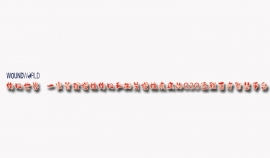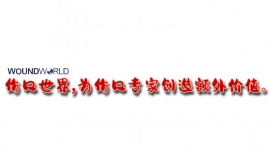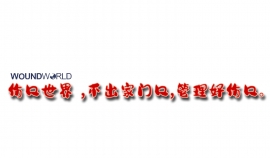文献精选
Author: Joyce Black
Joyce Black is Professor, College of Nursing, University of Nebraska Medical Center, Omaha, Nebraska, US
Despite the frequency of pressure ulcers on the heels, little is written about them. While these ten top tips will not fill the literature gap, it may help you with this common problem.
Helen O’Neil
Citation: O’Neil (2023) Pharmacological treatment of painful neuropathy in adults with diabetes. The Diabetic Foot Journal 26(1): 20–3
Key words
- Diabetic neuroarthropathy
- Neuropathic pain
- Pharmacological therapy
Article points
1. Painful diabetic neuropathy is common in people with diabetes and is difficult to manage clinically.
2. Guidelines recommend amitriptyline, duloxetine, gabapentin or pregabalin as initial pain management options.
3. Patients often do not respond to monotherapy, so combination pharmacotherapy may be required.
Author
Helen O’Neil is Senior Medicines Optimisation Pharmacist, South Tyneside and Sunderland NHS Foundation Trust, UK
Diabetic neuropathy is one of the most prevalent chronic complications in people living with diabetes and painful diabetic neuropathy is difficult to manage clinically. Guidelines recommend offering a choice of amitriptyline, duloxetine, gabapentin or pregabalin as initial treatment for neuropathic pain. It is recommended that pharmacotherapy is offered in a stepwise approach to ensure tolerability and effectiveness of individual medications. Patients often do not respond to monotherapy and, therefore, combination pharmacotherapy may be required. The aim of treatment is to improve quality of life for patients living with painful diabetic neuropathy by reducing pain and promoting increased participation in all aspects of daily living.
王勤周1 王 辉1 综述,陈红艳2 审校
(1.陕西省医疗器械质量监督检验院 陕西 西安 712046;2.空军军医大学唐都医院惠宾科 陕西 西安 710038)
[摘要]随着人们生活质量的不断提高,抗衰老的要求日益增强。干细胞具有自我更新、多向分化和旁分泌因子分泌能力,在创伤修复、组织再生和抗衰老等临床医学领域显现出良好的应用前景。本文就干细胞在抗衰老、促进皮肤再生领域的研究进展进行综述,从自体干细胞的移植、内源性干细胞的刺激和外源性成体干细胞移植的作用及其机制等角度探讨了干细胞抗衰老的可行性。以期为未来相关医疗保健及美容产品的开发提供借鉴。
[关键词]衰老;抗衰老技术;干细胞;细胞移植;医学美容
[中图分类号]R622 [文献标志码]A [文章编号]1008-6455(2018)11-0170-04
通信作者:陈红艳,空军军医大学唐都医院惠宾科护士长,主管护师,高级美容技师;在文绣美容,问题性皮肤护理,痣、疣、斑的超高频治疗方面有丰富的临床工作及教学经验
第一作者:王勤周,陕西省医疗器械质量监督检验院,硕士研究生,副主任技师;研究方向:生物医学组织工程技术的应用;E-mail: 该Email地址已收到反垃圾邮件插件保护。要显示它您需要在浏览器中启用JavaScript。
The Application of Stem Cell Technology in the Field of Anti-aging
WANG Qin-zhou1 ,WANG Hui1 ,CHEN Hong-yan2
(1.Shaanxi Institute of Medical Device Quality Supervision and Inspection,Xi’an 712046,Shaanxi,China;2.Huibinke,Tangdu Hospital,Air Force Military Medical University,Xi’an 710038,Shaanxi,China)
Abstract: With the continuous improvement of people's life quality, the demand of anti-aging is increasing. Stem cells are non-specialized cells which have the ability of self-renewal, multiple differentiation and paracrine secretion. It has been shown that stem cells have good application prospects in the field of trauma repair, tissue regeneration and anti-aging. This paper reviewed the progress of stem cell research in the field of anti-aging and promoting skin regeneration. The feasibility of rejuvenation technologies by stem cells was discussed from the point of view of autologous stem cell transplantation, activation of endogenous stem cells, and the effect and its mechanism of exogenous stem cell transplantation. It will provide reference for future development of related medical care and beauty products.
Key words: senility; rejuvenation technologies; stem cells; cell transplantation; medical cosmetology
赵学凯,梁自乾,张宪发,宗守凯
Mature epidermal cells dedifferentiate towards epidermal stem cells
Zhao Xue-kai, Liang Zi-qian, Zhang Xian-fa, Zong Shou-kai
Department of Burn and Plastic Surgery, the First Affiliated Hospital of Guangxi Medical University, Nanning 530021, Guangxi Zhuang Autonomous Region, China
Zhao Xue-kai★,Studying for master’s degree, Department of Burn and Plastic Surgery, the First Affiliated Hospital of Guangxi Medical University, Nanning 530021, Guangxi Zhuang Autonomous Region, China zhaoxuekai3581@ 163.com
Correspondence to: Liang Zi-qian, Professor, Master’s supervisor, Department of Burn and Plastic Surgery, the First Affiliated Hospital of Guangxi Medical University, Nanning 530021, Guangxi Zhuang Autonomous Region,China Liangzqian@ yahoo.com.cn
Received: 2011-06-16 Accepted: 2011-10-10
广西医科大学第一附属医院烧伤整形外科,广西壮族自治区南宁市530021
赵学凯★,男,1985 年生,山东省滨州市人,汉族,广西医科大学在读硕士,主要从事创面愈合、表皮干细胞的研究。该Email地址已收到反垃圾邮件插件保护。要显示它您需要在浏览器中启用JavaScript。
通讯作者:梁自乾,教授,硕士生导师,广西医科大学第一附属医院烧伤整形外科,广西壮族自治区南宁市 该Email地址已收到反垃圾邮件插件保护。要显示它您需要在浏览器中启用JavaScript。
中图分类号:R318
文献标识码:B
文章编号: 1673-8225 (2011)49-09295-04
收稿日期:2011-06-16
修回日期:2011-10-10 (20110516001/WL·W)
Abstract
BACKGROUND: Epidermal stem cells as seed cells have been paid great attention on the research of wound repair and regeneration with its specific biological advantages with the development of molecular biology and bioengineering.
OBJECTIVE: To review the recent advances in the mature epidermal cells dedifferentiating towards epidermal stem cells.
METHODS: The first author retrieved PubMed database, Highwire database (Highwire.standford.edu) and CNKI for articles published from January 1998 to January 2011. The key words were “dedifferentiation, epidermal stem cell, epidermal cell, induction” in English and Chinese. A total of 2 754 literatures were collected, and finally 46 papers were included in result analysis.
RESULTS AND CONCLUSION: The dedifferentiated epidermal stem cells have some characteristics of native epidermal stem cells and perhaps they may act as a new vehicle for wound repair and regeneration. Both of the native epithelial stem cells and the dedifferentiated epithelial stem cells can promote the wound repair and their effects were on the same level. Because differentiation from epidermal cells into epidermal stem cells has many questions, so far, there are many animal researches, but its extensive clinical application deserves further development.
Zhao XK, Liang ZQ, Zhang XF, Zong SK. Mature epidermal cells dedifferentiate towards epidermal stem cells.Zhongguo Zuzhi Gongcheng Yanjiu yu Linchuang Kangfu. 2011;15(49):9295-9298. [http://www.crter.cn http://en.zglckf.com]
摘要
背景:表皮干细胞以显著的自我更新和多向分化潜能及皮肤组织工程学中诱人的应用前景,作为“种子细胞”成为皮肤创伤研究领域的热点之一。
目的:综述表皮细胞去分化逆转为表皮干细胞的研究近况。
方法:应用计算机检索 1998-01/2011-01 PubMed、Highwire 和中国期刊全文数据库相关文章,检索词“dedifferentiation,epidermal cells,epidermal stem cells,induction,去分化,表皮细胞,表皮干细胞,诱导”。共检索到文献 2 754 篇,最终纳入符合标准的文献 46 篇。
结果与结论:去分化来源的表皮干细胞与机体自身来源的表皮干细胞之间在形态学和功能有许多相似点,并可表达表皮干细胞的特异性标记物。表皮细胞去分化途径制造表皮干细胞,可以作为机体自身来源表皮干细胞的替代细胞应用于皮肤损伤重建和再生的相关研究,为实现皮肤创伤由解剖修复到功能修复的“完美修复”提供新思路。
关键词:表皮细胞;去分化;表皮干细胞;诱导;皮肤组织工程;创面愈合;综述文献
doi:10.3969/j.issn.1673-8225.2011.49.041
赵学凯,梁自乾,张宪发,宗守凯.表皮细胞去分化的表皮干细胞[J].中国组织工程研究与临床康复,2011,15(49):9295-9298.
[http://www.crter.org http://cn.zglckf.com]




